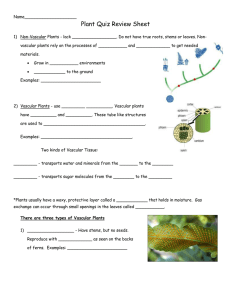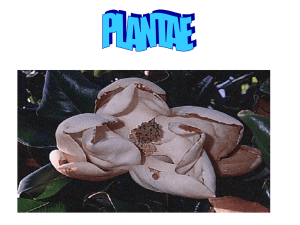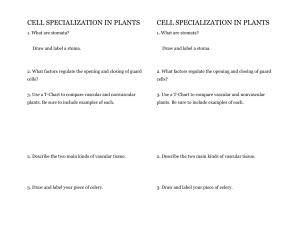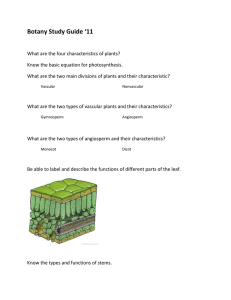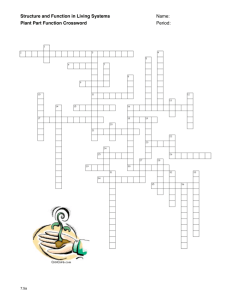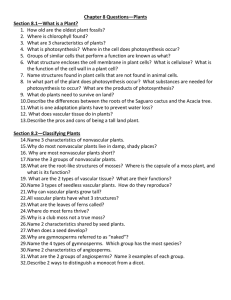Plants
advertisement
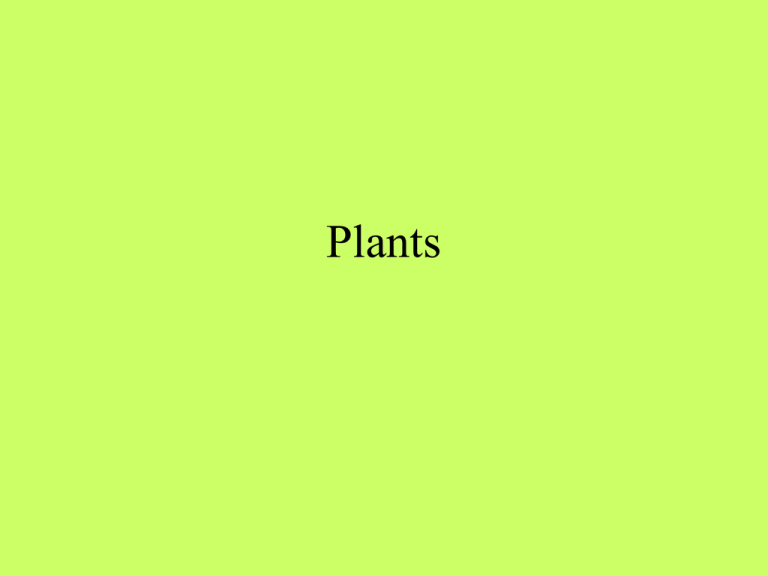
Plants Characteristics of Plants • All are multicellular • Autotrophs (make own food by photosynthesis); few are carnivorous • Cells are eukaryotic and have cell walls Characteristics of Plants • Life cycle alternates between a sexual phase (gametophyte) and an asexual phase (sporophyte) Characteristics of Plants • Absorb nutrients from ground • Exchange gases (CO2 and O2 ) through stomata in their leaves • 2 major types: Nonvascular and vascular Nonvascular Plants • Mosses, liverworts, hornworts • Lack vascular tissue (tubes that transport food, water, and minerals throughout the plant) • Water and nutrients travel from one cell to another by diffusion and osmosis • Must be extremely short and live in moist environments Nonvascular Plants Vascular Plants • Some produce spores to reproduce (ferns & horsetails) • Some produce seeds to reproduce Why are seeds better? They protect the embryo! Vascular Plants – Gymnosperms- most are cone-producing & have needles. • Ex.: conifers (pine, fir, spruce) • Pollen fertilizes the ovule, a seed develops on the scale of a cone, and then the scales open enough to allow the seed to be carried by wind Vascular Plants • Angiosperms – flower-producing plants – Pollen enters the top of the pistol and travels down to fertilize the ovule. The seeds develop in the ovary (which will become the fruit) and are usually dispersed by animals. Vascular Plants • Have vascular tissue that transports materials and provides support and stability. (makes up the stem) • Can grow tall and live in a variety of habitats. Leaf Cross-Section Cuticle is waxy to prevent water loss. stomata What comes in and what goes out of the stomata? Veinstransport water/food Stomata- gas exchange (stem) What is fruit? When pollination occurs, pollen moves from the male parts to the female parts. Pollen grains land on the stigma and a tiny tube grows from it and down the style into the ovary. The fertilized ovule becomes the seed and the ovary becomes the fruit. Seeds • Function: to hold, protect, and feed the embryo • Dispersal: – Wind • ex.: “helicopters” (food for embryo) – Animals • Ex.: burrs, eat & excrete
